Introduction
What is Gluten?
Gluten is a type of protein found in grains like wheat, barley, and rye. It gives dough its elasticity and helps it rise and maintain its shape.
Who Needs a Gluten-Free Diet?
A gluten-free diet is essential for individuals with celiac disease, an autoimmune disorder where ingesting gluten damages the small intestine. It’s also recommended for those with non-celiac gluten sensitivity, who experience similar symptoms without the autoimmune response.
What to Expect in This Article
This article will guide you through the initial steps of adopting a gluten-free diet, including:
- Identifying gluten-containing foods
- Reading food labels effectively
- Finding gluten-free alternatives
- Tips for dining out and social settings
- Managing nutritional balance
By the end of this guide, you will have a comprehensive understanding of how to navigate and maintain a gluten-free lifestyle successfully.
Understanding Gluten
Definition of Gluten
Gluten is a composite of storage proteins termed prolamins and glutelins that are naturally present in certain cereal grains. Specifically, gluten is prevalent in wheat, barley, and rye. These proteins are what gives the dough its elastic texture, allowing it to maintain shape and rise during the baking process. For many, gluten is a staple component of a regular diet; however, the proteins can lead to adverse health effects for those with gluten-related disorders.
Common Sources of Gluten
Identifying gluten-containing foods is crucial for maintaining a gluten-free diet. Common sources of gluten include:
Wheat-based products:
- Bread
- Pasta
- Cereals
- Baked goods
Barley-based products:
- Malt (found in malted milk and beer)
- Brewer’s yeast
Rye-based products:
- Rye bread
- Rye beer
Additionally, gluten can be hidden in many processed foods through additives like thickeners, preservatives, and stabilizers that may contain gluten. Reading food labels carefully is vital in identifying and avoiding these hidden sources.
Symptoms of Gluten Intolerance and Celiac Disease
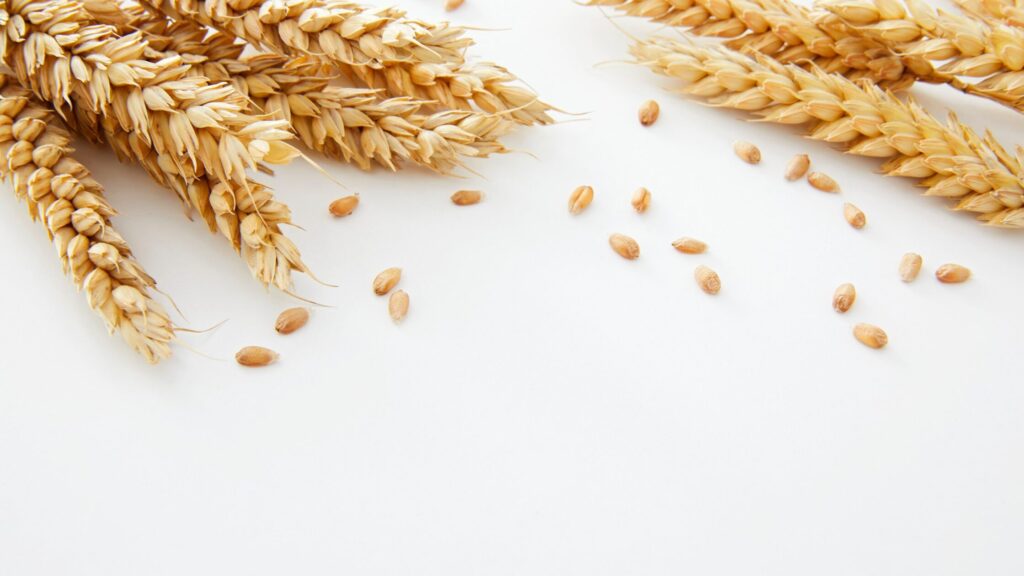
Recognizing the symptoms of gluten intolerance and celiac disease is vital for proper diagnosis and management. While both conditions share some common symptoms, there are distinct differences:
Symptoms of Celiac Disease
Celiac disease is an autoimmune disorder, and the ingestion of gluten triggers an immune response that damages the small intestine. The symptoms can vary widely among individuals, including:
Gastrointestinal Symptoms:
- Chronic diarrhea or constipation
- Bloating and gas
- Abdominal pain
- Nausea and vomiting
Systemic Symptoms:
- Unexplained weight loss
- Fatigue
- Anemia (due to iron deficiency)
- Bone or joint pain
- Dermatitis herpetiformis (an itchy, blistering skin rash)
- Neurological symptoms (like depression, brain fog, or seizures)
- Delayed growth and development in children
Symptoms of Non-Celiac Gluten Sensitivity (NCGS)
Non-celiac gluten sensitivity (NCGS) occurs when individuals experience symptoms similar to those of celiac disease without the associated immune response or intestinal damage. The symptoms typically include:
Gastrointestinal Symptoms:
- Abdominal pain and bloating
- Diarrhea or constipation
- Nausea
Systemic Symptoms:
- Fatigue and tiredness
- Headaches
- Muscle and joint pain
- Brain fog
- Depression or anxiety
It’s essential for individuals experiencing these symptoms to consult healthcare professionals for an accurate diagnosis. Distinguishing between celiac disease, NCGS, and other gastrointestinal conditions is critical for effective treatment and management.
Benefits of a Gluten-Free Diet

Health Benefits for Those with Gluten Intolerance
Adopting a gluten-free diet can lead to significant health improvements for individuals with gluten-related disorders. Some of the key benefits include:
Relief from Gastrointestinal Symptoms:
- Reduced bloating and gas
- Mitigation of chronic diarrhea or constipation
- Decrease in abdominal pain and cramping
Improved Nutrient Absorption:
- Enhanced absorption of essential nutrients, leading to better overall health
- Improvement in symptoms associated with nutrient deficiencies, such as anemia
Neurological and Psychological Benefits:
- Reduction in brain fog and improvement in cognitive function
- Alleviation of anxiety and depressive symptoms
Dermatological Improvements:
- Healing of dermatitis herpetiformis, an itchy skin rash associated with celiac disease
Enhanced Energy Levels:
- Reduced fatigue and increase in daily energy levels
Potential Benefits for the General Population
While a gluten-free diet is essential for those with celiac disease and non-celiac gluten sensitivity, other individuals may also experience some advantages by adopting this dietary approach. Potential benefits for the general population include:
Reduction in Processed Food Consumption:
- Encourages the intake of whole, unprocessed foods
- Limits exposure to food additives and preservatives
Increased Intake of Fruits and Vegetables:
- Greater emphasis on naturally gluten-free fruits and vegetables, contributing to a more balanced diet
Better Awareness of Food Labels:
- Promotes mindful eating habits and greater awareness of food ingredients
Weight Management:
- Potential for improved weight control through healthier eating choices and reduced intake of high-calorie, gluten-containing foods
Enhanced Compliance with Dietary Restrictions:
- Facilitates easier management of other dietary needs, such as lactose intolerance or food allergies, by promoting a cautious approach to food selection and preparation
It’s important to note that while some individuals may find health benefits in reducing gluten intake, a gluten-free diet is not necessarily healthier for everyone. It should be approached with careful consideration of nutritional balance and individual health needs.
Steps to Start a Gluten-Free Diet
Step-by-Step Guide
Step 1: Educate Yourself About Gluten and Gluten-Free Foods
Understanding what gluten is and which foods contain it is the cornerstone of starting a gluten-free diet. Research the grains and products that have gluten, and familiarise yourself with gluten-free alternatives. Books, reputable websites, and healthcare providers can provide valuable insights.
Step 2: Plan Your Meals and Snacks
Meal planning is crucial for maintaining a gluten-free diet. Create a weekly menu that includes breakfast, lunch, dinner, and snacks, ensuring that each meal is balanced and nutrient-dense. Preparing meals in advance can prevent inadvertent gluten consumption and mitigate the temptation to opt for convenience foods that may contain gluten.
Step 3: Read Labels Carefully
Gluten can often be hidden in processed foods through additives, thickeners, and preservatives. Make it a habit to read food labels carefully to check for gluten ingredients. Keep a list of safe foods and ingredients as well as those to avoid. Many countries have labelling laws that require allergens, including gluten, to be clearly marked on food packaging.
Step 4: Avoid Cross-Contamination
Cross-contamination can occur when gluten-free foods come into contact with gluten-containing foods. Use separate utensils, cooking equipment, and storage containers for gluten-free items. Be mindful of shared appliances like toasters and grills that may harbour gluten residues.
Step 5: Find Gluten-Free Substitutes
Experiment with gluten-free grains and flours to find substitutes that work for your recipes. Quinoa, rice, corn, and buckwheat are excellent gluten-free options. Many grocery stores now offer a wide range of gluten-free products, from bread and pasta to snacks and desserts, which can make the transition smoother.
Step 6: Seek Support from Communities or Dietitians
Joining gluten-free communities, whether online or in-person, can provide emotional support and practical advice. Connecting with others who follow a gluten-free diet can offer tips, product recommendations, and moral support. Additionally, consulting a dietitian who specialises in gluten-free diets can help ensure nutritional balance and compliance with dietary needs.
Gluten-Free Foods List
Comprehensive List of Safe Foods
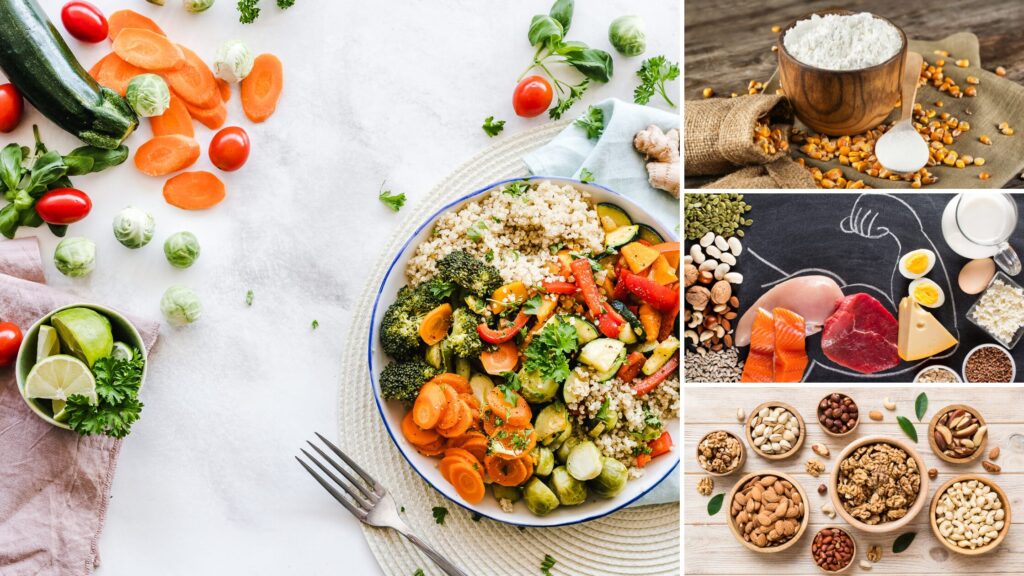
Maintaining a gluten-free diet requires knowledge and understanding of safe foods. Here is a comprehensive list:
Fruits:
- Apples
- Berries
- Bananas
- Citrus fruits
Vegetables:
- Leafy greens (spinach, kale)
- Broccoli
- Carrots
- Peppers
Grains and Starches:
- Rice (white, brown, wild)
- Quinoa
- Corn
- Potatoes (sweet and regular)
- Buckwheat
Proteins:
- Plain meats (chicken, beef)
- Fish
- Eggs
- Legumes (beans, lentils)
Dairy:
- Milk
- Cheese
- Yogurt (make sure to check for any added gluten)
Nuts and Seeds:
- Almonds
- Walnuts
- Chia seeds
- Flaxseeds
You will see these in our wide range of gluten-free products!
Gluten-Free Flours:
- Almond flour
- Coconut flour
- Rice flour
- Tapioca flour
For more detailed information on gluten-free foods, visit Celiac.org – Safe Gluten-Free Foods.
Foods to Avoid
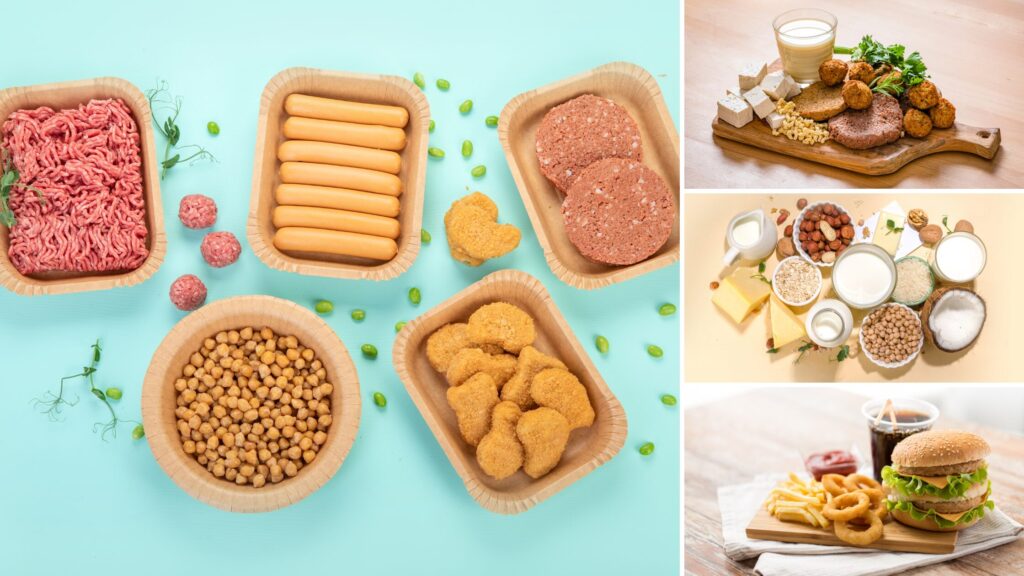
While incorporating gluten-free foods into your diet is crucial, it’s equally important to know which foods to avoid:
Wheat-Based Products:
- Bread
- Pasta
- Cereal
- Cookies and cakes
Barley-Based Products:
- Malt (malt vinegar, malted milk)
- Beer and certain alcoholic beverages unless labeled gluten-free
Rye-Based Products:
- Rye bread
- Rye flour
Certain Processed Foods:
- Soups and sauces (thickened with flour)
- Snacks (crisps, crackers)
- Processed meats
Beverages:
- Some coffee substitutes
- Non-distilled alcoholic beverages like certain beers
For a more exhaustive list, please refer to Gluten.org – Foods to Avoid.
Understanding both safe and risky foods allows for better management and ensures a healthy, balanced gluten-free diet.
Creating a Gluten-Free Diet Plan
Sample Meal Plans for a Week
To help you get started, here is a week-long sample gluten-free meal plan:
Day 1
- Breakfast: Greek yogurt with fresh berries and chia seeds
- Lunch: Quinoa salad with mixed greens, cherry tomatoes, cucumber, and grilled chicken
- Dinner: Baked salmon with roasted sweet potatoes and steamed broccoli
Day 2
- Breakfast: Smoothie with spinach, banana, almond milk, and protein powder
- Lunch: Lentil soup with a side of gluten-free crackers
- Dinner: Stir-fried tofu with bell peppers, onions, and brown rice
Day 3
- Breakfast: Scrambled eggs with avocado and turkey bacon
- Lunch: Rice and black bean bowl with corn, salsa, and shredded cheese
- Dinner: Grilled shrimp skewers with quinoa and a side of grilled vegetables
Day 4
- Breakfast: Gluten-free oatmeal topped with sliced almonds and honey
- Lunch: Turkey and avocado lettuce wraps
- Dinner: Chicken curry with coconut milk served over cauliflower rice
Day 5
- Breakfast: Cottage cheese with pineapple chunks
- Lunch: Spinach and feta gluten-free pasta salad
- Dinner: Beef stir-fry with snap peas and jasmine rice
Day 6
- Breakfast: Smoothie bowl with gluten-free granola and mixed fruit
- Lunch: Baked potato topped with chili and shredded cheese
- Dinner: Grilled chicken Caesar salad with gluten-free croutons
Day 7
- Breakfast: Gluten-free pancakes with maple syrup and fresh berries
- Lunch: Hummus and vegetable platter with gluten-free pita bread
- Dinner: Baked quinoa-stuffed bell peppers
Shopping List Essentials
When preparing for a gluten-free diet, having staple items in your pantry is key to effortlessly creating delicious and balanced meals. Here’s a list of essentials to keep on hand:
Grains and Flours:
- Quinoa
- Brown rice
- Corn tortillas
- Almond flour
- Coconut flour
- Gluten-free oats
Proteins:
- Chicken breast
- Lean beef
- Fish fillets
- Tofu
- Eggs
- Beans and lentils
Fruits and Vegetables:
- Fresh and frozen berries
- Citrus fruits
- Leafy greens
- Bell peppers
- Sweet potatoes
- Avocado
Snacks and Treats:
- Gluten-free crackers
- Rice cakes
- Almond butter
- Mixed nuts
- Dried fruit
Dairy:
- Greek yogurt
- Hard cheeses
- Almond milk
- Cottage cheese
For a comprehensive list of gluten-free food items, you can refer to Celiac Disease Foundation – Safe Food List.
Tips for Dining Out
Maintaining a gluten-free diet while dining out can be challenging but manageable with a few tips:
- Research Restaurants: Look for restaurants that offer gluten-free menus or are known for their gluten-free accommodations. Apps and websites like Find Me Gluten Free can be helpful.
- Communicate Your Needs: Always inform your server of your gluten-free requirement. Ensure they understand the severity of gluten contamination if you have a medical condition like celiac disease.
- Ask Questions: Don’t hesitate to ask about meal preparation methods, ingredients, and cross-contamination risks. Some kitchens may be able to use separate cookware or utensils for your meal.
- Simplify Your Choices: Opt for naturally gluten-free foods such as grilled meats, fresh vegetables, and salads (without croutons or dressings that might contain gluten).
- Carry Safe Snacks: Bringing your own gluten-free snacks can be a lifesaver if you’re unsure whether you can safely eat the options available.
For more dining out strategies, visit Beyond Celiac – Dining Out Gluten-Free.
Gluten-Free Recipes
Breakfast Recipes
Greek Yogurt with Berries and Chia Seeds

Ingredients:
- 1 cup Greek yogurt
- A handful of fresh berries (strawberries, blueberries, raspberries)
- 1 tbsp chia seeds
- Honey to taste
Instructions:
- Spoon the Greek yogurt into a bowl.
- Top with fresh berries and sprinkle chia seeds over the top.
- Drizzle with honey if desired.
- Enjoy a nutritious and gluten-free start to your day!
Gluten-Free Oatmeal with Sliced Almonds and Honey

Ingredients:
- 1 cup gluten-free oats
- 2 cups water or almond milk
- 1/4 cup sliced almonds
- 1 tbsp honey
- A pinch of salt
Instructions:
- In a pot, bring the water or almond milk to a boil.
- Add the gluten-free oats and a pinch of salt.
- Reduce heat and simmer for about 5 minutes, stirring occasionally.
- Serve the oatmeal in bowls and top with sliced almonds and honey.
Lunch Recipes
Quinoa Salad with Mixed Greens and Grilled Chicken
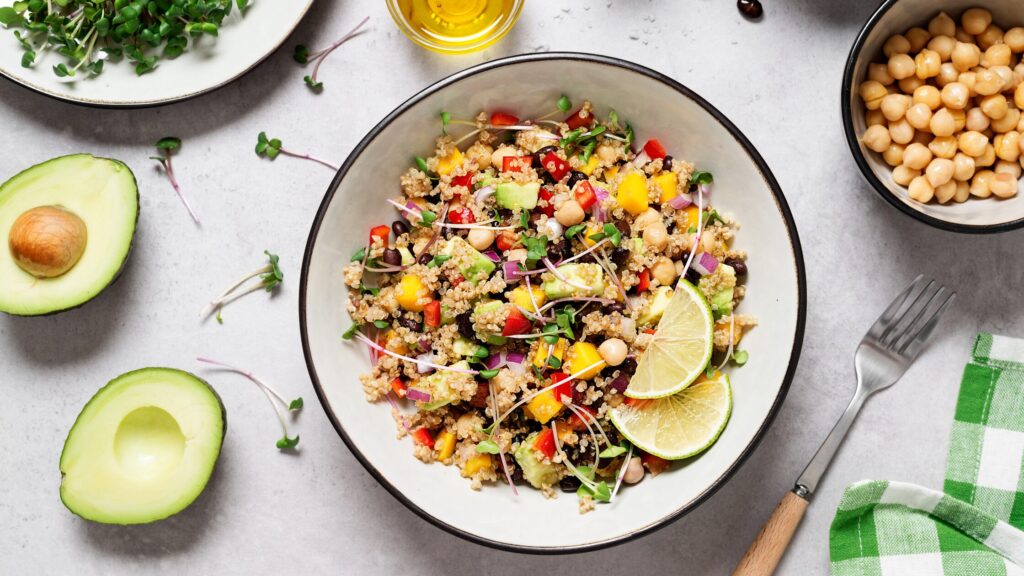
Ingredients:
- 1 cup cooked quinoa
- 2 cups mixed greens
- 1 grilled chicken breast, sliced
- 1/2 cup cherry tomatoes, halved
- 1/4 cup cucumber, diced
- Olive oil and balsamic vinegar for dressing
Instructions:
- In a large bowl, combine the mixed greens, cherry tomatoes, and cucumber.
- Add the cooked quinoa and top with sliced grilled chicken.
- Drizzle with olive oil and balsamic vinegar, and toss to combine.
- Serve immediately.
Rice and Black Bean Bowl with Corn and Salsa
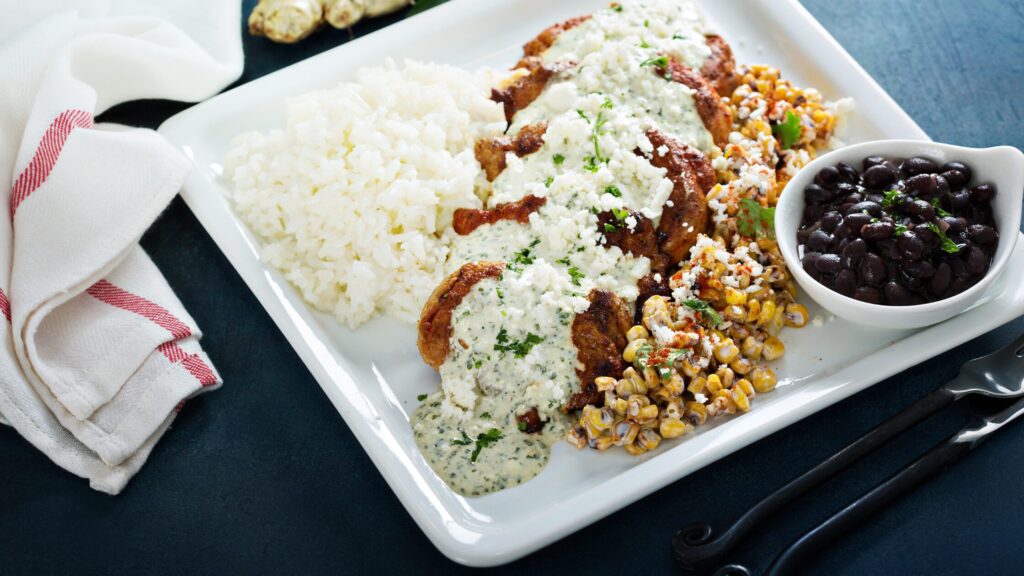
Ingredients:
- 1 cup cooked brown rice
- 1/2 cup black beans, drained and rinsed
- 1/2 cup corn kernels
- 1/4 cup salsa
- Shredded cheese to taste
Instructions:
- In a bowl, combine the cooked brown rice, black beans, and corn.
- Top with salsa and shredded cheese.
- Microwave for 1-2 minutes until heated through.
- Stir well and serve.
Dinner Recipes
Baked Salmon with Roasted Sweet Potatoes and Steamed Broccoli
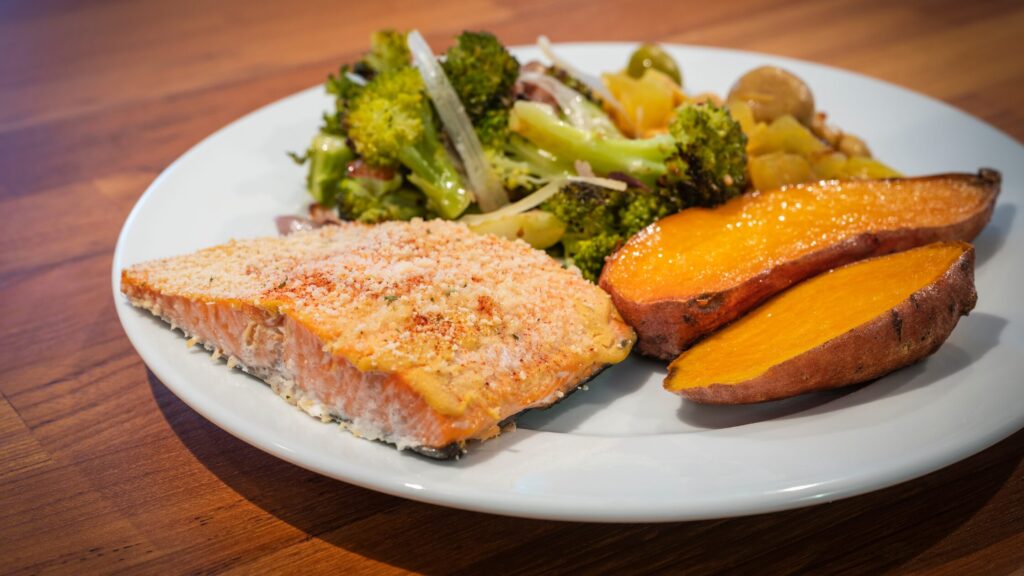
Ingredients:
- 2 salmon fillets
- 2 sweet potatoes, peeled and diced
- 1 head of broccoli, cut into florets
- Olive oil, salt, and pepper
Instructions:
- Preheat the oven to 400°F (200°C).
- Toss the diced sweet potatoes with olive oil, salt, and pepper, and spread on a baking sheet. Roast for 25-30 minutes until tender.
- Season the salmon fillets with salt and pepper and place on a separate baking sheet. Bake for 15-20 minutes.
- Steam the broccoli until tender, about 5-7 minutes.
- Plate the salmon with roasted sweet potatoes and steamed broccoli, and serve.
Chicken Curry with Coconut Milk and Cauliflower Rice
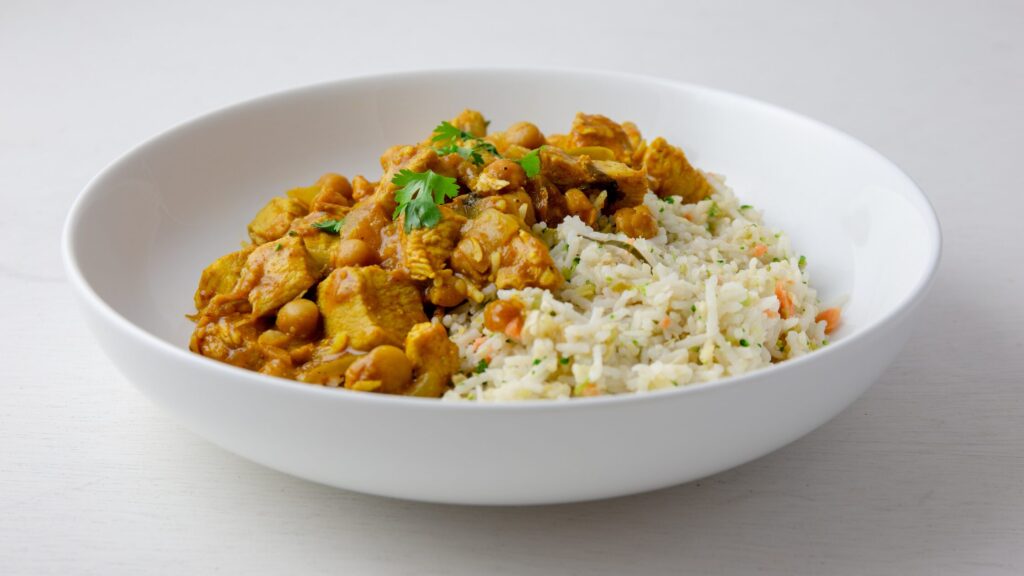
Ingredients:
- 2 chicken breasts, diced
- 1 can of coconut milk
- 2 tbsp curry powder
- 1 onion, chopped
- 1 head cauliflower, priced
- pricedOlive oil, salt, and pepper
Instructions:
- Heat olive oil in a large skillet over medium heat. Sauté the chopped onion until translucent.
- Add the diced chicken and cook until browned.
- Stir in the curry powder and then add the coconut milk. Simmer for 20 minutes.
- Meanwhile, heat another skillet with olive oil and sauté the cauliflower rice until tender, about 5 minutes.
- Serve the chicken curry over the cauliflower rice.
Snack Recipes
Hummus and Vegetable Platter with Gluten-Free Pita Bread

Ingredients:
- Store-bought or homemade hummus
- A variety of sliced vegetables (carrots, celery, bell peppers)
- Gluten-free pita bread, cut into wedges
Instructions:
- Arrange the sliced vegetables on a plate.
- Place a bowl of hummus in the center.
- Add the gluten-free pita bread wedges to the platter.
- Serve as a healthy and satisfying gluten-free snack.
Rice Cakes with Almond Butter and Dried Fruit
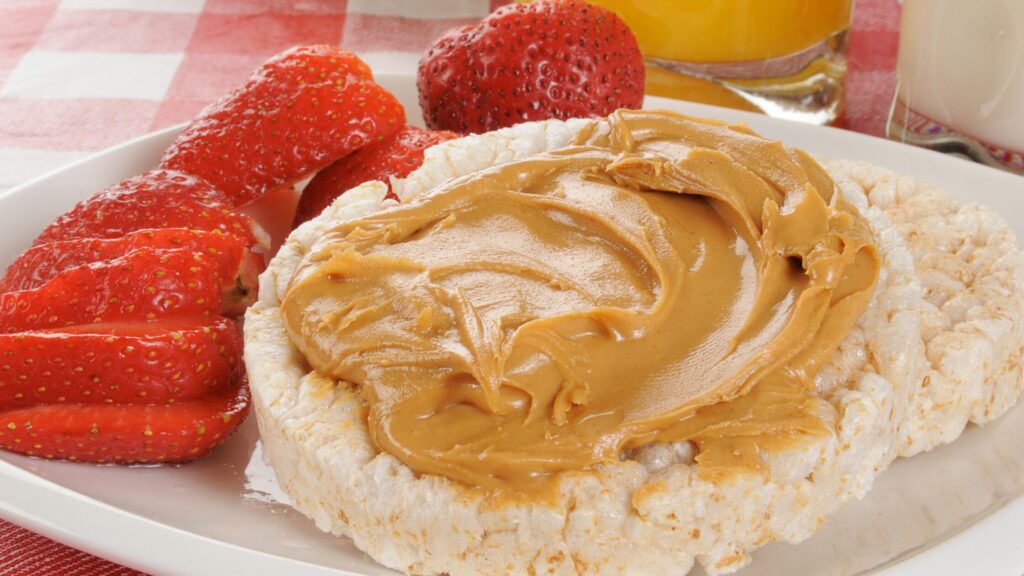
Ingredients:
- Rice cakes
- Almond butter
- A selection of dried fruits (raisins, cranberries, apricots)
Instructions:
- Spread a layer of almond butter on each rice cake.
- Top with dried fruit of your choice.
- Enjoy as a quick and nutritious gluten-free snack.
Common Pitfalls and How to Avoid Them
Hidden Sources of Gluten
Gluten can lurk in surprising places, making it crucial to read labels and stay vigilant. Common culprits include sauces, dressings, soups, and processed foods. Always check for ingredients like malt, modified food starch, and hydrolyzed vegetable protein, which may indicate the presence of gluten. When in doubt, consider contacting the manufacturer for clarification.
Mistakes Beginners Make
One common mistake is assuming that all grain products are gluten-free. While rice and corn are safe, grains like barley, rye, and spelt are not. Another frequent error is neglecting cross-contamination risks. Shared cooking surfaces or utensils can easily transfer gluten to your food. Using dedicated gluten-free cookware and adhering to strict meal preparation protocols can help mitigate this risk.
How to Handle Social Situations and Eating Out
Navigating social situations and dining out can be challenging on a gluten-free diet. Communicating your needs clearly and confidently is key. Inform your host or server about your dietary restrictions ahead of time. Don’t hesitate to ask detailed questions about food preparation and ingredient lists. Bringing a gluten-free dish to share can also ensure you have safe options.
Conclusion
Summary of Key Points
Embarking on a gluten-free journey requires careful planning and informed choices. Being aware of hidden sources of gluten, avoiding common beginner mistakes, and handling social situations with preparedness can significantly ease the transition. With time and practice, maintaining a gluten-free lifestyle becomes second nature.
Remember, the benefits of adhering to a gluten-free diet, especially for those with celiac disease or gluten sensitivity, far outweigh the initial challenges. Focus on the positive impact on your health and well-being. Experiment with new recipes and relish the opportunity to discover diverse and delicious gluten-free foods.
We invite you to share your experiences and ask any questions you may have. Your stories and inquiries can support and guide others on the same path. Join our community in creating a supportive and informative space for everyone navigating a gluten-free lifestyle.



